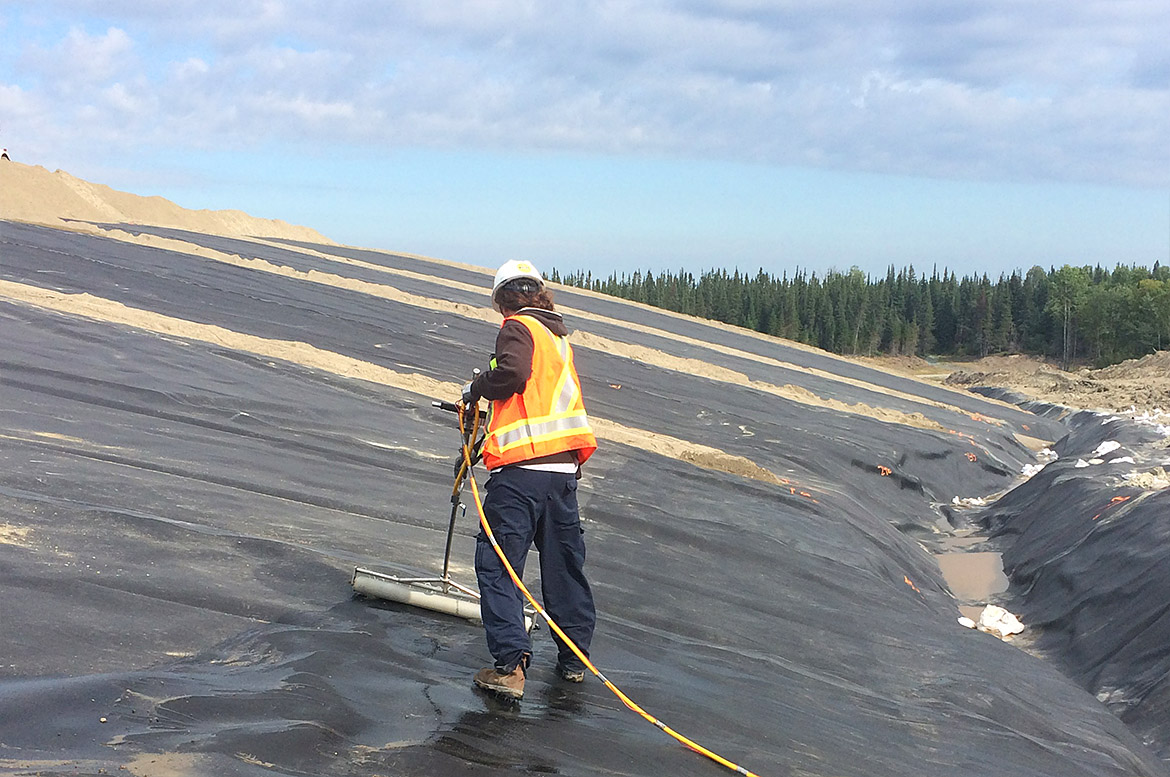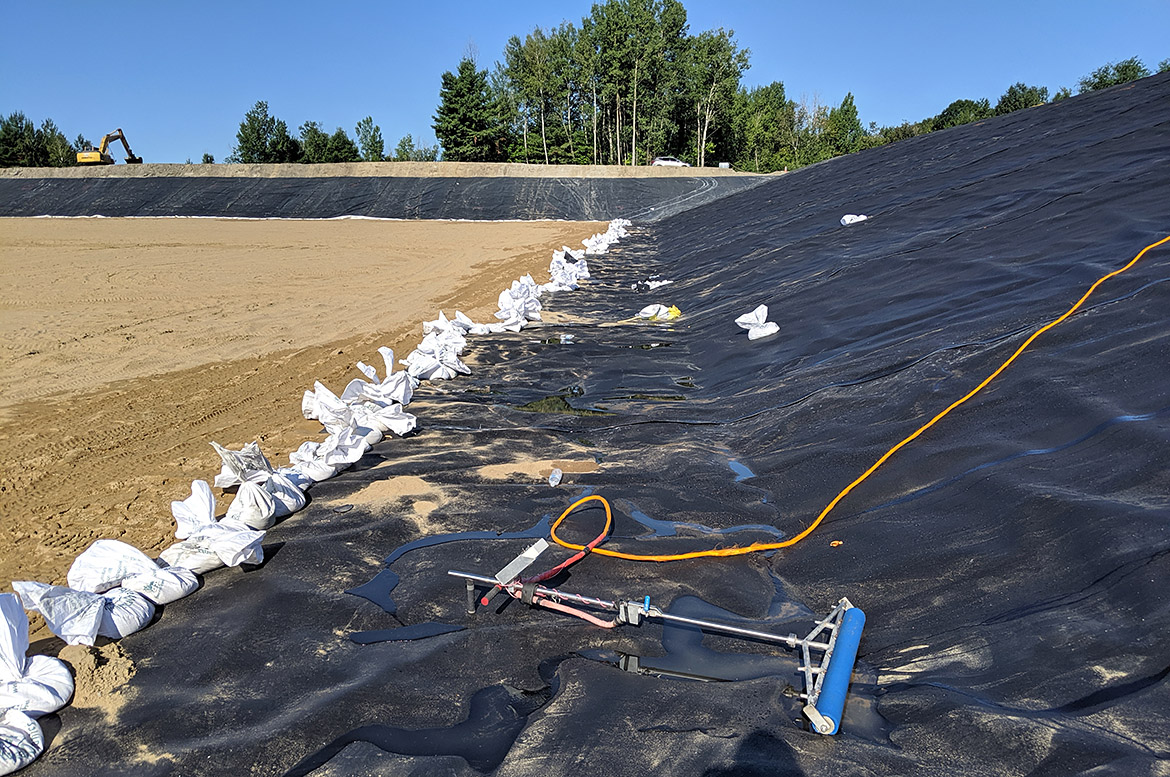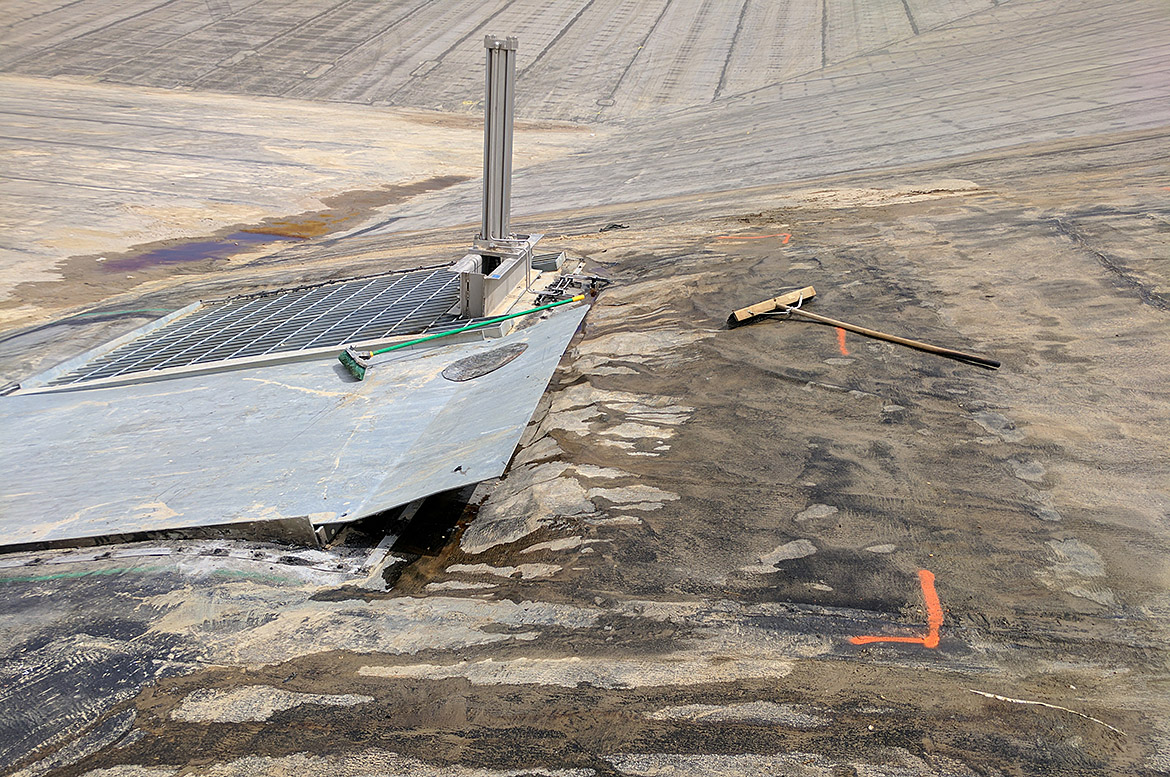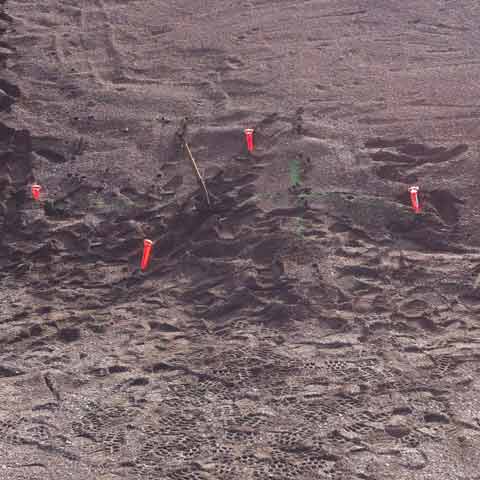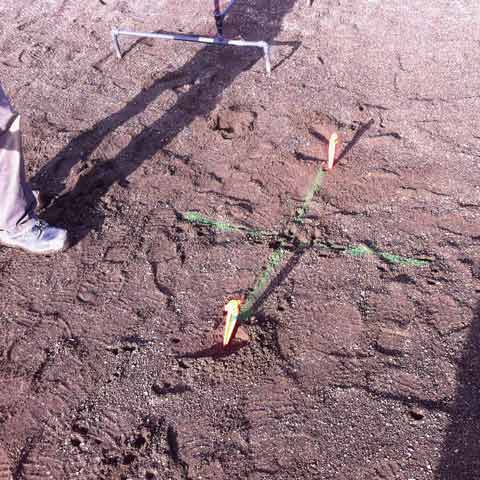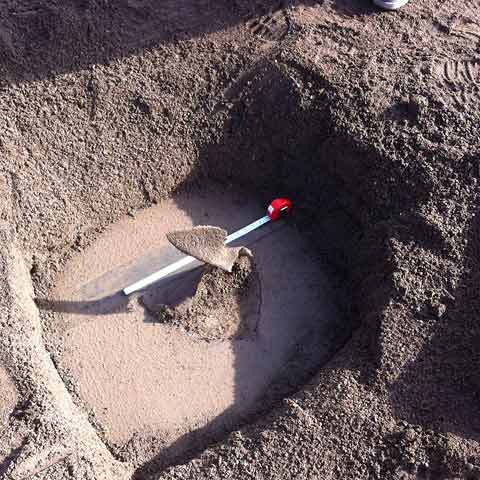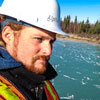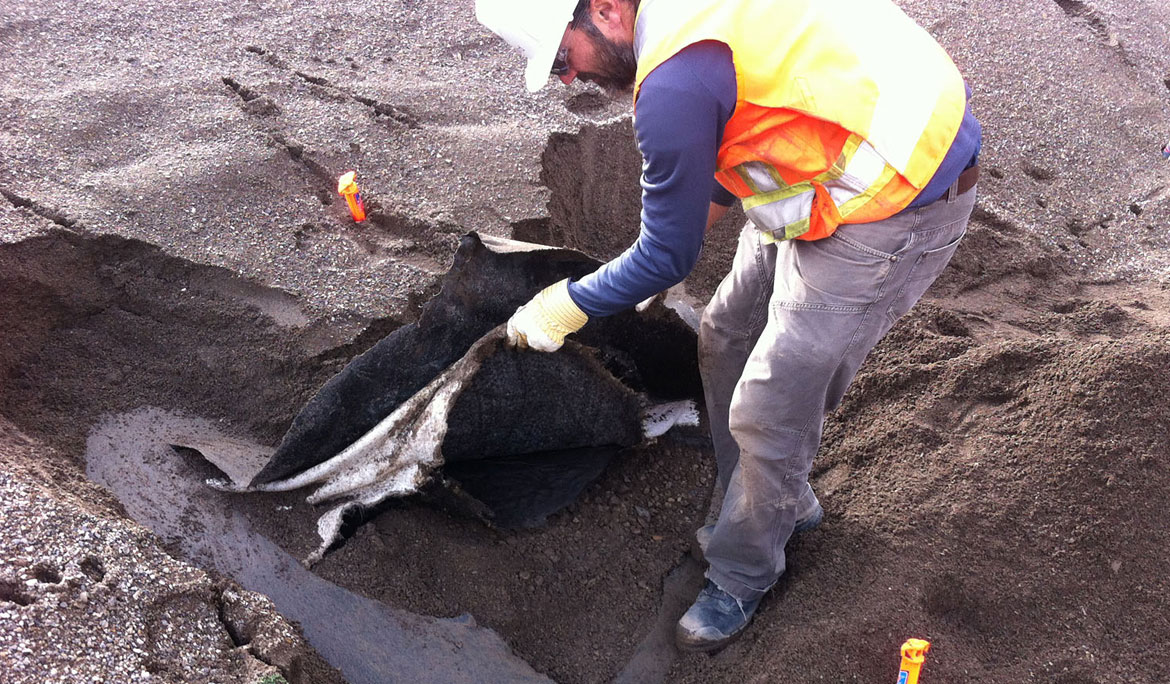
Dipole on a geomembrane sitting on a GCL
We are frequently asked whether leak location can be performed on geocomposite clay liner (GCL) materials. The answer is always the same: as long as the liner is not completely dried out, leak location is possible.
Leak location requires a minimum GCL moisture content of around 5%. In some cases, this GCL materials can exhibit a moisture content below 5% immediately following their installation. But one the GCL has been in place for 2-3 days, the capillary activity of the GCL on moisture in the ground is enough to make the GCL electrically conductive.
The following photographs show two leaks detected with the dipole method (ASTM D7007) on a geomembrane installed on a GCL layer. The stakes indicate the location of the leaks. The first leak passed through both the geomembrane and the GCL, and in such cases the GCL poses no problem for leak location methods.
In the second case the leak was only in the liner and the GCL was intact, but the leak was nevertheless easy to locate using standard dipole methods. Groupe Alphard’s technicians have located a large number of leaks in geomembranes installed on GCL layers over the years, so it bears repeating: geocomposite clay liners do not prevent electrical leak location!



